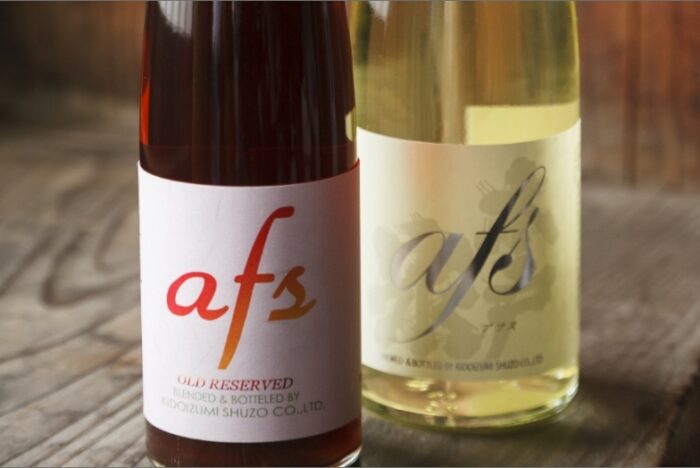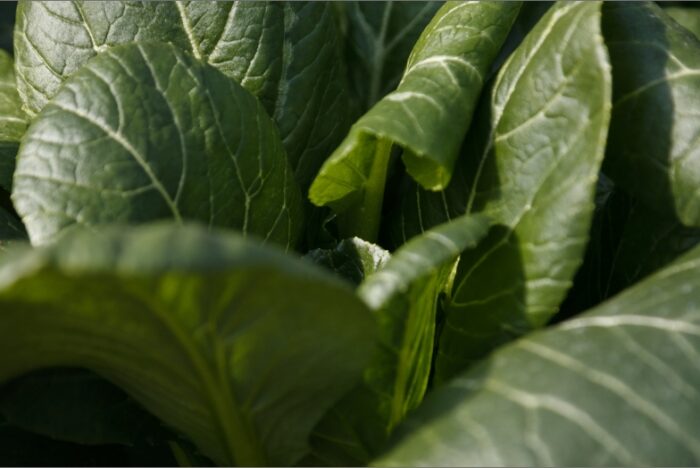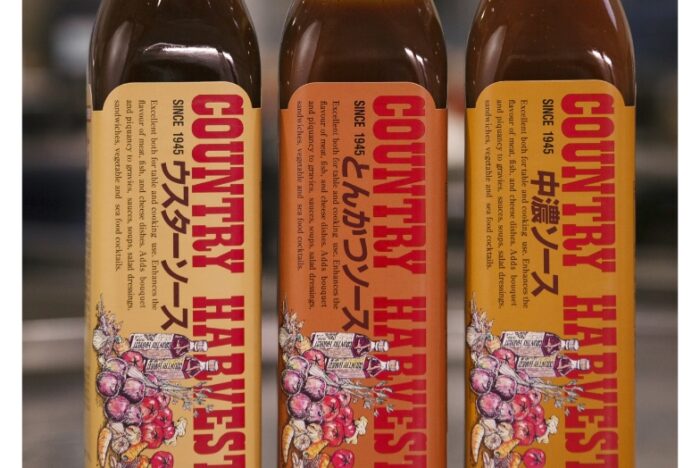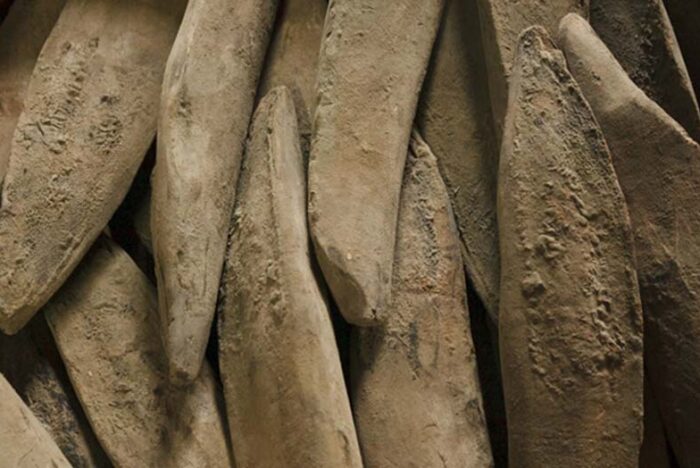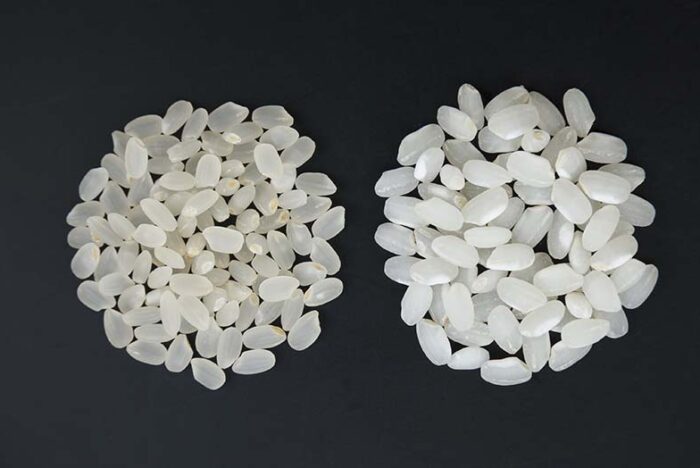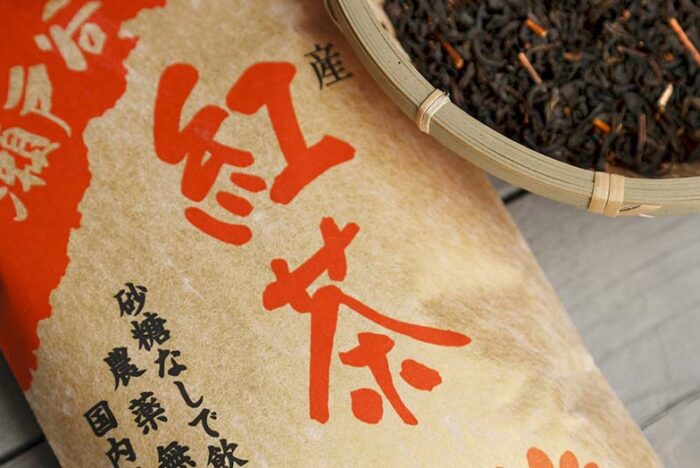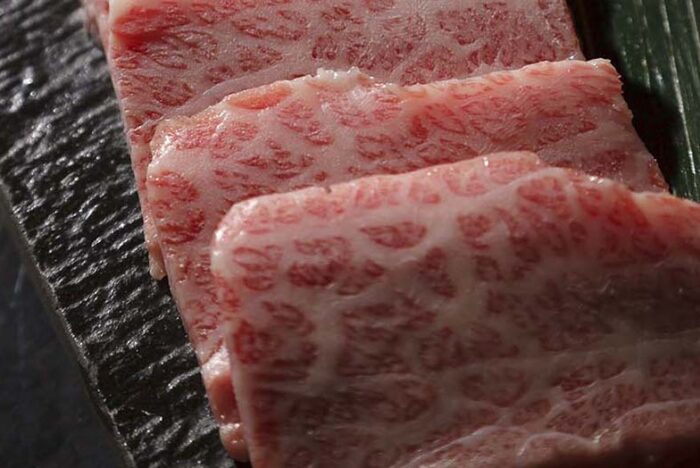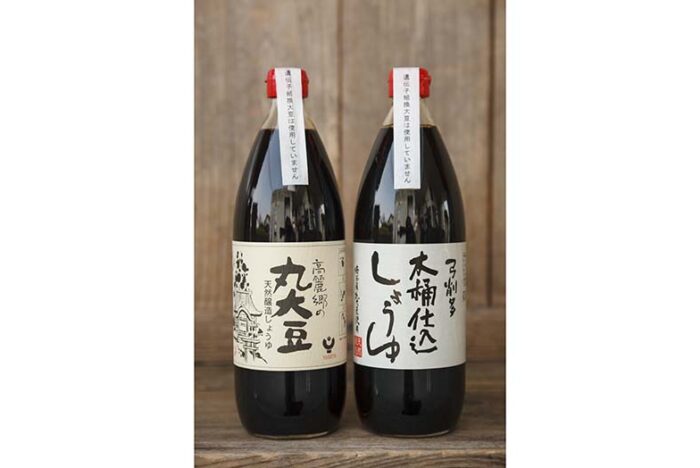Mr. Hermé visits wheat fields in Biei, Hokkaido
2014.08.06
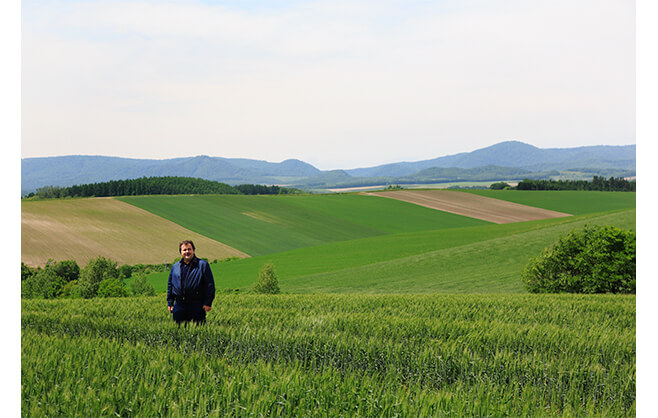 |
photographs by Masahiro Goda / English translation by Yuko Wada and Sean Gaston
Pierre Hermé devotes himself to discovering good ingredients. One of the themes he currently focuses on is “flour.” So he visited the town of Biei, Hokkaido, a leading Japanese wheat-growing district, in order to learn more about wheat in Japan.
"Flour" is Current theme.
Pierre Hermé currently delves into the rich background of flour, stating, “While the relationship between bread and flour has been studied exhaustively, there is still a dearth of research on the influence of flour on the taste of confectionery.”
Flour is essential for making confectionery, but as far as the taste is concerned, ingredients such as butter, sugar, eggs, chocolate and fruit are more influential. They bring sweetness, sourness, richness, umami, burned spicy taste or the concentration of ingredients made by boiling or cooking down to confectionery as deciding factors in the taste impression. Meanwhile, flour forms the foundation and framework, so excels at expanding confectionery or making it fluffy or thick, but does not overwhelmingly impact flavor. This means it has a kind of thankless job.
“We pâtissier have regarded flour as a basic component. But I began to consider whether we could further pursue its function in regards to taste. For this reason, I must know more about wheat in Japan. More and more boulanger and pâtissier in Japan have fallen madly in love with domestic wheat. The varieties of wheat with a character unique to Japan have been developed and the quality has improved dramatically. I must see the actual production site of wheat in Japan.” Thus he decided to visit Biei in Hokkaido.
At the Patchwork Hill
“I never imagined that I could see such beautiful western-style scenery in Japan.” Hermé admired the view while observing the Biei landscape known as “Patchwork Hill.” This is the landscape of farming villages formed alongside a tough pioneering history and precious scenery painstakingly formed through local farming activity.
In fact, the town of Biei is a member of the “Most Beautiful Villages in Japan” association. This is an action group aimed at making farming, fishing and mountain villages self-reliant and able to maintain the beautiful scenery and culture which is unrecoverable if once lost. Hitoshi Hamada, mayor of Biei, called on people to establish the association. After being greatly impressed while attending a congress of “The Most Beautiful Villages of France,” Mayor Hamada made efforts to establish something similar in Japan. The local association started with 7 towns and villages in 2005 and presently consists of 53 local authorities. It joined the “World’s Most Beautiful Villages” association in 2010 and the world congress will be held here at Biei in next June.
Norio Urashima, a wheat farmer who also contributed to the development of this beautiful landscape through his farming, guided Hermé to his wheat fields. This is the first step of the “Hermé course in Japanese wheat.” When Urashima began his explanation with the sentence “This field is for Yumechikara for fall sowing,” Hermé asked, “What is fall sowing?” Urashima answered, “Hokkaido’s wheat has a fall-sowing variety to sow seeds in September and harvest from July to August as well as a spring-sowing variety to sow from April to May and harvest in August. Fall-sowing wheat blooms in early June, then starts bearing grains.” He then showed Hermé wheatears whose petals had begun to collapse.
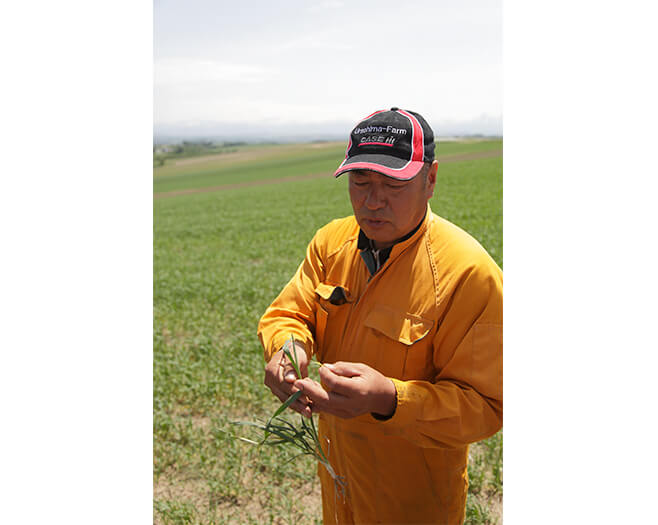 |
Norio Urashima, a farmer and board member of the Japan Agricultural Cooperatives of Biei (JA Biei), showed Hermé around his wheat field. |
To the question, “Is this variety unique to Japan?”, he answered, “It’s a variety of wheat that grows heartily in Japanese weather and climate, and has been improved upon many times.” Adding, “Of these varieties, three are grown in Biei: Kitahonami, Haruyokoi and Yumechikara.”
When Hermé looked over the field, murmuring “What a beautiful sight these waves of wheat shaken by the wind make,” Urashima stated, “The color of the field differs between fall and spring sowing or varieties. For example, Kitahonami has a darker color than Yumechikara. They make the Biei Hill look like a patchwork.”
Tasting wheat by production region or variety
“Hokuei La Colline Au Blé” opened this spring as a spot where we can enjoy both the scenery and delicacies of Biei. It is jointly operated by three entities: Lapin Foods led by Hiroshi Nakamichi, the chef of three star restaurant “Moliere” in Sapporo, town of Biei and JA Biei. “Hokuei La Colline Au Blé” accommodates “Restaurant bi.blé” that serves French cuisine using ingredients from Hokkaido, including Biei, a bread workshop baking bread made with Biei-grown wheat flour using local firewood, as well as a hotel and institute to train food professionals.
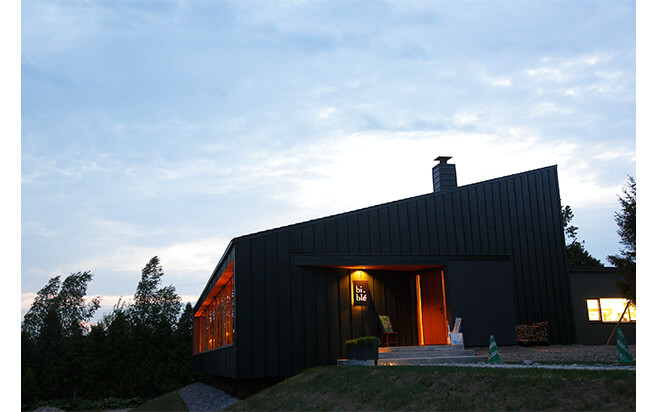 |
After passing through wheat fields which stretch as far as the eye can see and reach the top of the hill, we arrive at “Hokuei La Colline Au Blé (Hokuei Wheat Hill).” It was opened on April 22nd this year at the site of the former Hokuei Elementary School and consists of “Restaurant bi.blé,” along with a bread workshop, accommodations and a training institute.
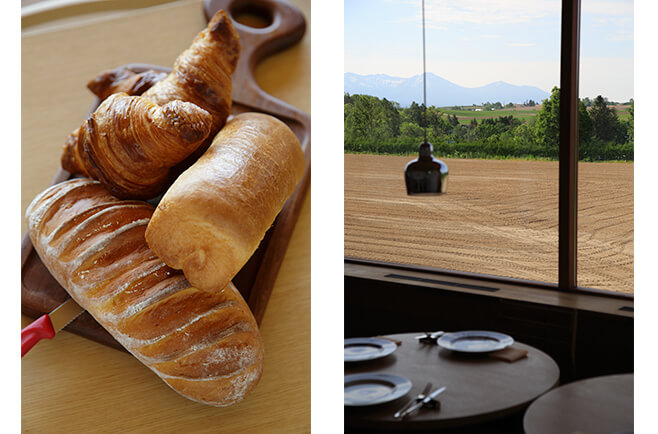 |
Exercising his skills as chef here is Toshiyuki Suzuki, who was head chef for 23 years at Pres Vert, a French establishment in Sapporo. For the bread workshop, a French-made stone kiln was installed and Boulanger Hisao Ogawa bakes bread made mainly with Biei-grown wheat flour, burning local wood. He offers freshly-baked croissants every morning which are highly praised by Hermé. Plans are in place to plant wheat fields on the former schoolyard which can be viewed from the restaurant windows, and presently a green manure crop called Ki-garashi (Yellow Mustard) is in place to improve the soil.
“Hokuei La Colline Au Blé” was the second stage in the “Hermé course in Japanese wheat.” In this part, the history of Japanese wheat and the characteristics of various wheat grains throughout Japan were explained.
The class began with a lecture by Yoshihiro Sakuma from Ebetsu Flour Milling who has contributed to the spread of Hokkaido-grown wheat, discussing the origins of Japanese wheat. According to the lecturer, the history of wheat consumption in Japan started at least as far back as the Nara Period (A.D. 710-784). Japanese wheat is a bit sticky and best suited for noodles, hence its popularity in that form. And bread was popularized through influence from the United States and the proliferation of school lunch programs. Since then, the world of Japanese bread has developed mainly based on imported wheat, but close attention is now being paid to domestic varieties. On this point, Hermé also agreed.
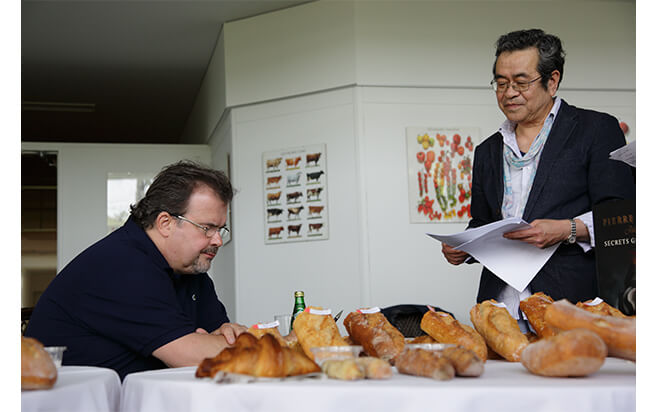 |
The main lecturer Yoshihiro Sakuma from Ebetsu Flour Milling gave a comprehensive lecture on the history and characteristics of Japanese wheat and milling.
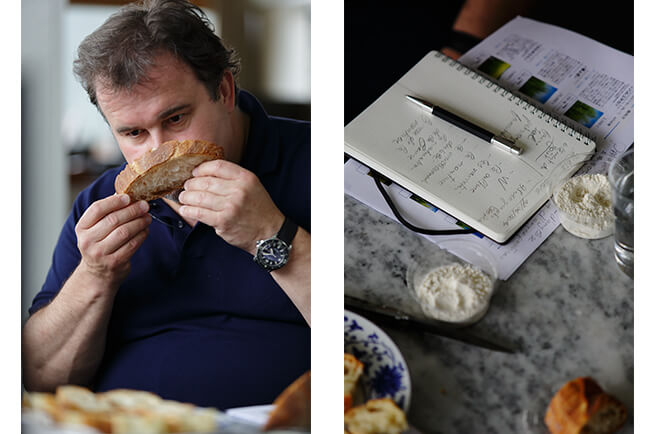 |
Hermé listened avidly to the lecture, taking notes. The intensive lecture continued for two and a half hours without a break, even overwhelming the energetic Hermé, who went outside to take a breath following the session.
Then the class moved on to the explanation about the 17 varieties of wheat starting with the 3 types from Biei and a bread tasting, with some baked under the same conditions by Toshio Nihei from bakery Donq.
“Hokkaido-grown wheat is generally suitable for sliced bread, as it often contains high levels of gluten. Kyushu-grown wheat is particularly suited for French bread, as it’s a traditional variety good for noodles, which are low in gluten.” said Nihei.
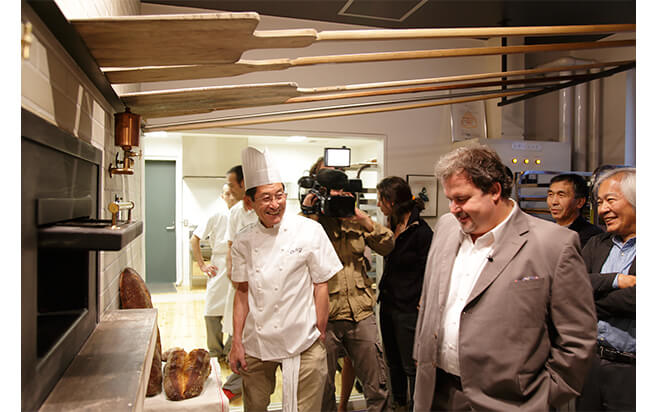 |
A talk session with Toshio Nihei from Donq who baked bread for tasting. What Nihei baked was handmade Rustique with the direct method because it more clearly reveals the flavor of the flour. As a result, people could appreciate the difference of expression and flour taste.
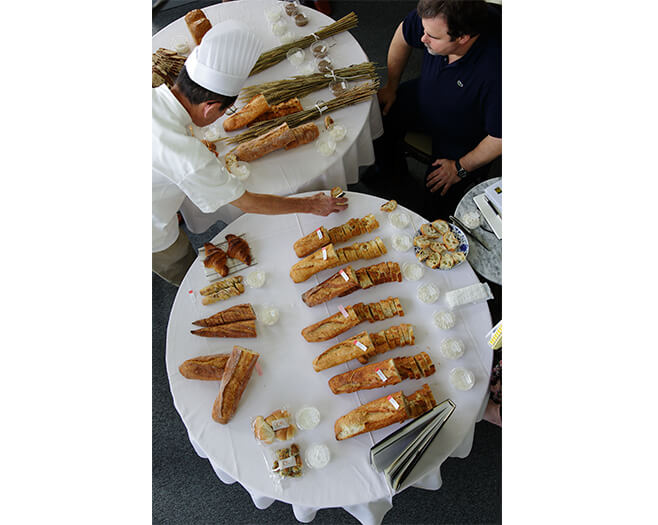 |
Flour used for bread in the tasting included the 3 types from Biei, Yumechikara blend, Haruyokoi blend and Kitahonami blend; Kitahonami (Hokkaido), Kitahonami blend (Hokkaido), Minaminokaori (Kyushu), Nishinokaori (Kyuhsu), Shiroganekomugi (Kyushu), Norin No.61 (main island of Japan), Satonosora (main island), Hanamanten (main island) and flour blend from Gunma (Satonosora, Tsurupikari, Kinunonami and W No.8). These breads were baked by Nihei. The bread of Organic Kitanokaori (Tokachi) produced by Agrisystem was prepared by Daisuke Katane from Katane Bakery and 10P09 and E65 (both are Ebetsu Wheat Milling’s Hokkaido-grown flour blend) were prepared by Masayuki Kimura from Dans Dix ans. |
Need to obtain flour that fits your own purpose!?
Recently, the number of boulanger in Japan visiting wheat fields in order to interact directly with the farmers has increased. Hidehiro Ito from Agrisystem, a food wholesaler, is the driving force behind this trend. When he explains, “More boulanger now want to specify the flour producer,” Hermé said, “I completely understand, because if they desire to make confectionery exactly to their own specifications, the ingredients become more important. For example, for chocolat de couverture, I have asked the maker to use cacao produced by a farmer specified by me, and I am now considering doing the same for my flour.” Hermé says that he currently tries to make macaroons sandwiching pâte sablée made with unique wheat flour, and also plans to make ice cream with pâte sablée.
"Today, I became familiar with the history and characteristics of Japanese wheat, which was fascinating. Now I need to understand French wheat on a deeper level. I already have plans to visit a bio wheat field in France in 10 days."
On leaving Biei, he asked, "The croissant I had for breakfast at bi.blé was great. Was that made with Hokkaido wheat as well?" "Of course!” we answered. He continued, “The feuillete was so beautiful!" The best praise we could hope to receive.
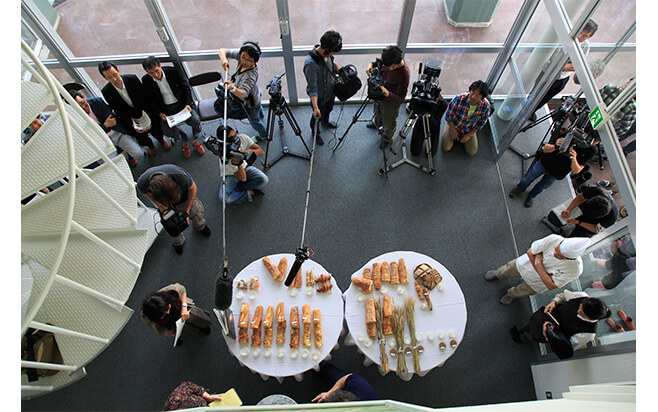 |
Since TV crews from 5 stations closely followed Hermé, the lecture was surrounded by members of the press.


